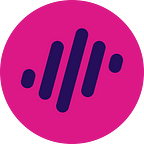Blockchain Tech For Healthcare Data Management
Electronic health records (HER) have for years been regarded as an important part of the healthcare industry because of their efficiency, security, organisation and reduction in data redundancy. However, traditional EHRs have been associated with poor interoperability and privacy issues especially since digital data can be shared or accessed by unauthorised people quite easily. The challenges of data management by EHR systems can be resolved by use of the blockchain technology, which has advantages of decentralisation, data transparency, privacy and security.
Additionally, blockchain technology has a lot of use cases in the medical field, owing to its decentralised architecture, security features, scalability and record fidelity. This technology has shown a complete shift from traditional methods of record keeping, storage and sharing, giving users a lot of confidence regarding patients’ information privacy.
Blockchain technology can be used in healthcare data management in the following areas
i. Management Of Electronic Health Records
A high percentage of medical facilities use HER systems in the management of medical records, which have increased with advances in diagnostics and analytical tools. Governments have severe policies in the protection of patient data, making medical professionals have legal and ethical obligations, which when neglected can cause errors and data breaches. From the moment a patient’s record is created, it must be properly stored, secured and maintained. Poor medical data management puts patients and their privacy at risk.
Blockchain technology can help in the management of data due to its decentralised nature, as it is less prone to failure. Attacking the blockchain is very expensive for hackers, hence data stored here is safe. Additionally, no third-party is involved, reducing the risk to the system. Medical practitioners can be at ease with their patients’ data from the point of creation to the final moments of handing them off to the owners or other permissioned parties. Every change in this data is traceable and more concrete, allowing for involved parties to be transparent at all times.
ii. Medical Data Privacy and Security
All records stored in the blockchain are encrypted, which adds another layer of security to the network. Information added to the blockchain is linked and cannot be changed without affecting the entire block. This adds a layer of security unavailable in traditional systems. Therefore, using blockchain for privacy and security of medical data is better than using traditional HER systems that do not have this added layer.
For instance, privacy of patient data is ensured as a record of everyone with access to said data is provided. Additionally, all details about transactions are provided and notifications delivered to all involved parties after every contact. Therefore, patients can provide access to their data only to those they are willing to share this data with.
No one can have access to patient data if they have not been provided access by holders of the information, ensuring the privacy of this information. Patients using this system are assured of the privacy of their data, and can willingly share sensitive information with their care providers during appointments and check-ins. Further, it is possible for medical facilities to share private information between departments and other facilities without fear of the information landing in the wrong hands.
iii. Sharing Of Medical Information Among Healthcare Providers
There have been a lot of medical advancements, pandemics and medical research in different fields calling for collaborations as well as sharing of information for education and diagnostics purposes. The lack of resources in different areas means that patients and medical practitioners are disadvantaged hence care is not provided at the same level. Sharing of medical information can level the playing field and allow practitioners to have updated data and research on recent ailments allowing them to diagnose better.
Blockchain technology can enable the sharing of medical information because of its immutability, security and distributed nature. It is hard to change information that has been recorded on the blockchain, making the system tamperproof, which in turn provides a high degree of security and trust. Healthcare providers can therefore share information across facilities and borders without fear of this information being altered and deleted by recipients.
The blockchain makes it possible for medical research to be carried out by individuals in different locations and time zones, by allowing them a trusted system where they can actively update their findings. These can be recorded in seconds as no intermediaries are involved. This makes it easier for medical practitioners to share and collaborate on different projects with efficiency, as the security and integrity of their data is maintained.
Looking Forward
The Pulse Network solves the need for a comprehensive data bank that democratises access to latest diagnostic and pharmaceutical advances. The network solves the traditional challenges of medical data management by incorporating the blockchain system, which offers features that provide security, transparency, efficiency, privacy and trust.
Through the Pulse Network, users can easily create, store, share and destroy medical data without fear of this data being hacked or shared illegally to the wrong people. Pulse will use the blockchain to improve the management of electronic health records, medical data privacy, and security, and enable the sharing of medical information among healthcare providers.
